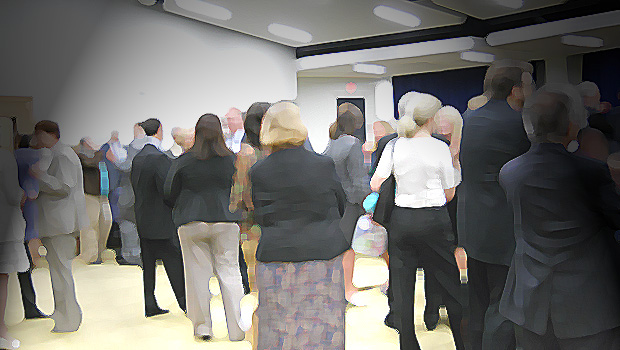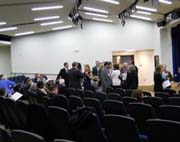

When I wrote the book Mad at School ![]() , these questions of design—and especially an understanding of design as a discursive process—were much on my mind. The specific focus of Mad at School is mental disability—that is, conditions imagined to affect the operation or quality of a person’s mind. During my research, I studied online and face-to-face academic spaces including classrooms, conferences, job searches, written academic discourse, and contingent scholarship. As I gathered data, I found that many of the most important interactions in academic culture take place in dynamic spaces of a type that I began to call kairotic.
, these questions of design—and especially an understanding of design as a discursive process—were much on my mind. The specific focus of Mad at School is mental disability—that is, conditions imagined to affect the operation or quality of a person’s mind. During my research, I studied online and face-to-face academic spaces including classrooms, conferences, job searches, written academic discourse, and contingent scholarship. As I gathered data, I found that many of the most important interactions in academic culture take place in dynamic spaces of a type that I began to call kairotic.
 Kairotic spaces are the less formal, often unnoticed, areas of academe where knowledge is produced and power is exchanged. A classroom discussion is a kairotic space, as is an individual conference with one’s advisor. Conferences are rife with kairotic spaces, including the Q&A sessions after panels, impromptu elevator encounters with colleagues, and gatherings at restaurants and bars on the periphery of formal conference events. Other examples from students’ experiences might include peer-response workshops, study groups, or departmental parties or gatherings to which they are invited.
Kairotic spaces are the less formal, often unnoticed, areas of academe where knowledge is produced and power is exchanged. A classroom discussion is a kairotic space, as is an individual conference with one’s advisor. Conferences are rife with kairotic spaces, including the Q&A sessions after panels, impromptu elevator encounters with colleagues, and gatherings at restaurants and bars on the periphery of formal conference events. Other examples from students’ experiences might include peer-response workshops, study groups, or departmental parties or gatherings to which they are invited.
Kairos is usually translated as “the opportune or appropriate time”; however, kairos really goes further than this. Cynthia Miecznikowski Sheard (1993) suggested that it incorporates multiple elements of context, including not only time but other factors including physical space and attitudes (p. 306). Jeffrey Grabill (2003), writing about infrastructure, argues along similar lines, saying that infrastructure is characterized by “key moments when [a situation’s] meaning and value become stabilized (if even for a moment) … [and] when possibilities and identities are established” (p. 464). As this implies, kairos carries ethical and contextual as well as temporal implications.
I define a kairotic space as one characterized by all or most of these criteria:
 I specify “all or most of these criteria” to indicate that the boundaries of such spaces are neither rigid nor objectively determined. So, for instance, an online discussion, a professor–student conference taking place via instant message, or a job interview held by telephone would all qualify as kairotic spaces although the “presence” of participants is debatable (about which more in a moment). But an informal study session between two students who have been friends for years and who experience minimal risk in studying together would not. The defining element of kairotic space is the pairing of spontaneity with high levels of professional/academic impact. Attention to relations of power is of great importance in understanding kairotic space, as is recognition that different participants in kairotic spaces will perceive those relations differently.
I specify “all or most of these criteria” to indicate that the boundaries of such spaces are neither rigid nor objectively determined. So, for instance, an online discussion, a professor–student conference taking place via instant message, or a job interview held by telephone would all qualify as kairotic spaces although the “presence” of participants is debatable (about which more in a moment). But an informal study session between two students who have been friends for years and who experience minimal risk in studying together would not. The defining element of kairotic space is the pairing of spontaneity with high levels of professional/academic impact. Attention to relations of power is of great importance in understanding kairotic space, as is recognition that different participants in kairotic spaces will perceive those relations differently.
Despite their importance, kairotic spaces tend to be understudied. One reason for this is that, due to their unscripted nature, it’s difficult to collect data in them (Ventola, Shalom, & Thompson, 2002, p. 361). Another, more compelling reason is that their impact tends to be underestimated by those who move through them with relative ease. The importance of kairotic space will be more obvious to a person who—for example—can hear only scraps of a conversation held among a group sitting at a table, or who needs more than a few seconds to process a question asked of her in a classroom discussion.